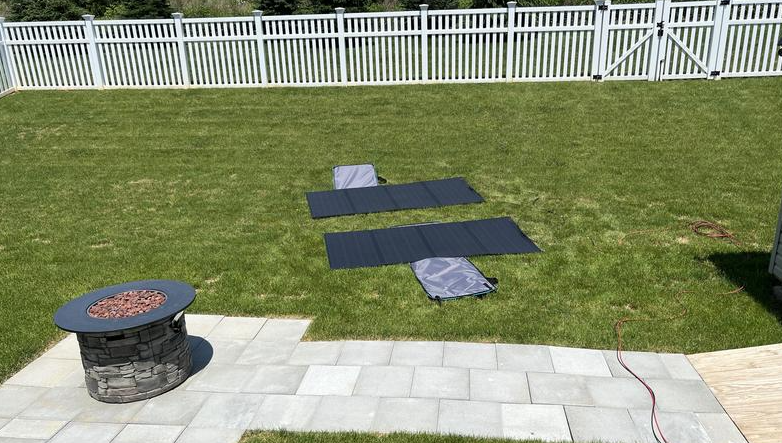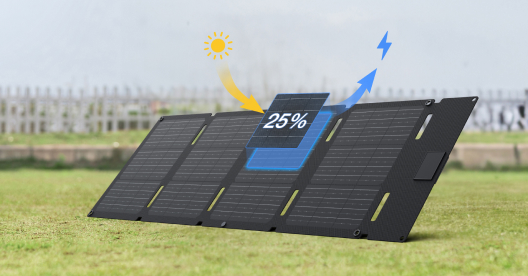Can Solar Panels Generate Power from Artificial Light?
- Do solar panels charge from artificial light?
- What Makes Solar Panels Work?
- Do Solar Panels Charge from Artificial Light? Here’s What Happens
- Why Artificial Light Doesn’t Work Well
- Real-World Testing Scenarios: When Artificial Light Can Be Useful
- What About Using Grow Lights or UV Lamps?
- Better Alternatives for Indoor Charging
- Final Takeaway
When people think of solar panels, they picture rooftops soaking in bright sunlight. That’s where panels perform best — under natural, direct solar radiation. But a common question arises when people bring solar indoors or test panels in cloudy weather:
Do solar panels charge from artificial light?
The short answer is yes, but very inefficiently. While solar panels can respond to certain types of artificial light, the output is minimal — far below what’s needed to power a home or even charge a typical battery bank.
This article explores how solar panels interact with artificial light, which types of light work better than others, and when this might matter in real-world scenarios like testing, indoor setups, or emergency charging.
What Makes Solar Panels Work?
To understand how artificial light affects solar panels, it helps to revisit how panels actually generate power.
Most residential solar panels — including EcoFlow’s monocrystalline models — rely on the photovoltaic effect, where light photons hit a semiconductor (usually silicon) and knock electrons loose, creating electric current. The more intense and broad-spectrum the light, the more energy is produced.
Sunlight is ideal because it provides a full spectrum of electromagnetic radiation, including visible light, ultraviolet (UV), and infrared (IR). Artificial lighting, by contrast, emits a narrower and usually weaker spectrum — which makes a big difference.
Do Solar Panels Charge from Artificial Light? Here’s What Happens
Technically, solar panels can generate some electricity from artificial sources — especially those with high light intensity and a spectrum that overlaps with sunlight. But the output is significantly lower. Let’s break it down by common indoor light types.
1. Incandescent Bulbs
Old-style incandescent bulbs produce light through heat. Most of their energy becomes infrared radiation, which solar panels cannot effectively use. Their intensity is low and inefficient for charging.
- Result: Very poor solar panel response
- Practical use: None for charging purposes
2. Fluorescent Lights
These are brighter and more energy-efficient than incandescent bulbs. Some of their spectrum overlaps with what solar cells can absorb, particularly in the visible blue-green range.
- Result: Slight improvement, but still far below usable levels
- Practical use: May trigger a charge controller indoors during testing, but won’t charge batteries meaningfully
3. LED Lights
LEDs are directional, low-heat, and can be made in color temperatures closer to daylight (5000–6500K). Some high-lumen LED lamps, especially white LEDs, produce light that solar panels can partially convert.
- Result: Among the best artificial sources — but still highly inefficient
- Practical use: Can help demonstrate functionality, simulate conditions for testing, or activate devices with extremely low power demand
4. Halogen Lights
Halogen bulbs operate at higher temperatures than incandescent lights and emit a broader spectrum. They’re still not efficient sources for solar charging, but they do perform slightly better than standard household bulbs.
- Result: Minor voltage generation possible
- Practical use: Limited to lab scenarios


Why Artificial Light Doesn’t Work Well
There are several reasons solar panels underperform under artificial lighting:
- Lower light intensity: The sun delivers ~100,000 lux at noon. Most indoor lights range from 300 to 1,000 lux — two orders of magnitude lower.
- Narrow light spectrum: Artificial lights often emit sharp peaks in specific wavelengths, whereas solar panels perform best with a continuous spectrum.
- Distance from source: Indoor lights are far less concentrated than sunlight, even at close range.
- Directionality: Artificial lights scatter, while solar panels benefit from direct incidence.
Even under bright LED shop lights, you may get milliwatts or a few volts, but very little current — not enough to meaningfully charge a solar power station or battery.
Real-World Testing Scenarios: When Artificial Light Can Be Useful
While artificial light can’t provide meaningful power, it has its place in specific scenarios:
Indoor Function Testing
Artificial light can help verify that your solar panel and charge controller are connected properly. Under a bright LED or halogen lamp, your EcoFlow power station might briefly show a “charging” icon. However, the light intensity is too weak to deliver usable power. This is useful for setup checks or wiring tests, not for actual charging.
Low-Power Device Operation
Some devices—like solar calculators, digital thermometers, or indoor garden lights—can run under artificial light. These use low-efficiency panels and draw only microwatts to milliwatts of power. A desk lamp or overhead lighting is often enough to keep them operating. These devices are designed for low-light environments and don’t reflect typical solar system performance.
Classroom or Lab Demonstrations
In education, artificial light helps demonstrate the photovoltaic effect without needing sunlight. A halogen bulb paired with a mini panel can spin a small fan or power a voltmeter, making it ideal for hands-on learning. While helpful in a classroom, this method doesn’t scale for real energy needs.
What About Using Grow Lights or UV Lamps?
Some readers wonder: “Can I use a high-power grow light or UV lamp to charge my solar panels indoors?”
Technically, yes — with powerful grow lights (full-spectrum LED or HID) you might generate enough light intensity and spectrum overlap to activate a solar panel. But there’s a catch: grow lights often consume more power than the solar panel collects from them.
So you’d be using electricity to generate a small fraction of that same electricity — which defeats the purpose. It's like charging a battery by using another battery to shine a flashlight on the solar panel.
But there ARE good alternatives:
Better Alternatives for Indoor Charging
AC Wall Outlets (Standard Home Power)
This is by far the fastest and most convenient method for indoor charging. Portable power stations are designed to plug directly into a standard wall socket, converting the AC power from your home into DC power for the battery. This method provides a consistent and powerful charge, allowing your power station to reach full capacity in as little as an hour (for smaller units like the EcoFlow RIVER 2) to a few hours for larger models.
Car Charging (Using a Vehicle's 12V Outlet or Alternator)
While generally slower than AC charging, car charging is an excellent option for on-the-go power top-ups or when grid power isn't available. You can plug your power station into your car's 12V cigarette lighter outlet or, for faster charging, use a dedicated alternator charger that connects directly to your car's battery (requiring the car's engine to be running). This turns your vehicle into a mobile charging station.
EcoFlow Smart Generator (or other compatible generators)
For serious power backup during outages or in off-grid situations, a smart generator offers a reliable and efficient way to recharge your portable power station. These generators often run on gasoline or propane and are specifically designed to quickly replenish the battery capacity of power stations, providing a substantial power input that no indoor light could ever hope to replicate.
USB-C Charging (for compatible models)
Many modern portable power stations, especially smaller and mid-sized ones, can be charged via USB-C. This offers versatility, as you can use a high-wattage USB-C wall adapter or even power a smaller power station from another larger power bank or compatible device. It's a convenient option for topping up when other faster methods aren't available.


Final Takeaway
So, do solar panels charge from artificial light? Technically, yes. But practically, no — not in any meaningful or efficient way.
Artificial lights simply can’t match the sun in intensity or spectrum. They’re fine for testing or demonstration purposes, but not for generating real power. If you're setting up an off-grid system or portable power station, natural sunlight or EcoFlow’s reliable backup options remain the only effective charging sources.
Understanding what solar panels can and can’t do helps you design smarter, more reliable systems — and avoid chasing solutions that look clever but don’t deliver.